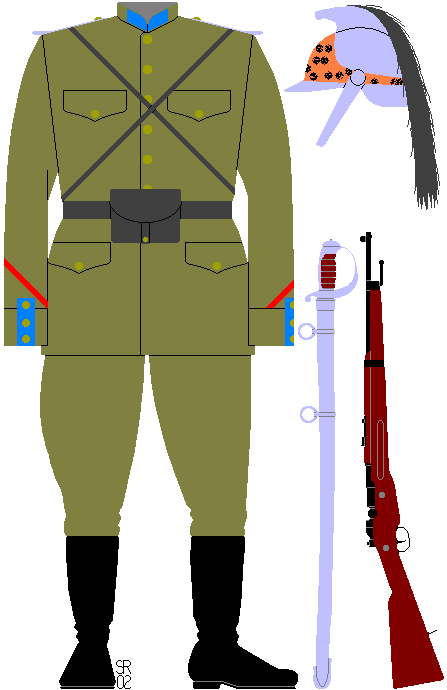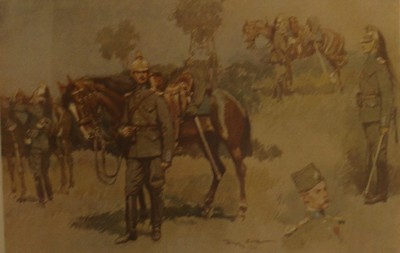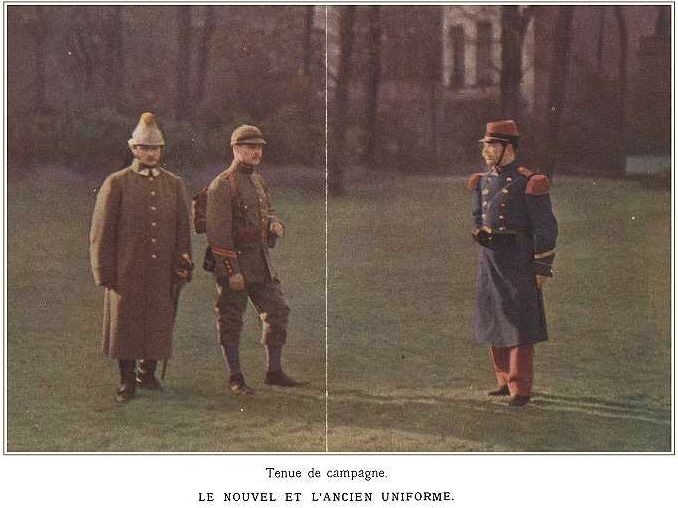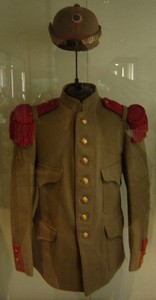France's Reseda Uniform
5 posters
Page 1 of 1
 France's Reseda Uniform
France's Reseda Uniform
France had several goes at a less conspicuous uniform prior to the Great War, the 'Reseda' was the last, 1912/13.
https://i.servimg.com/u/f32/12/22/09/10/res10.jpg
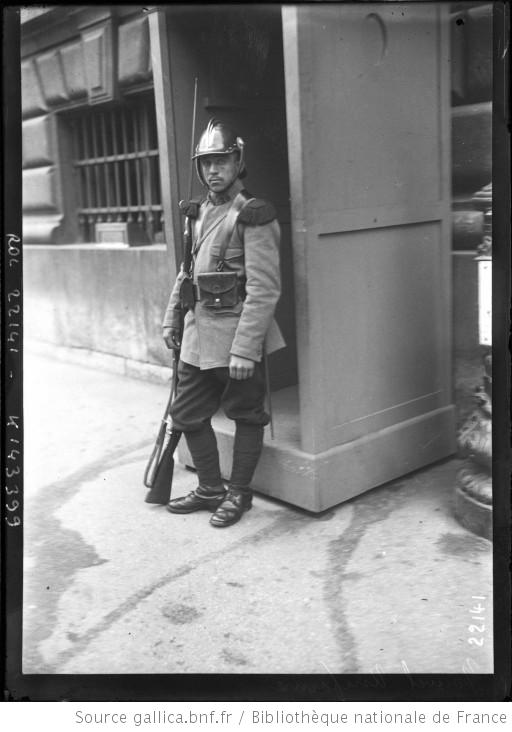
https://i.servimg.com/u/f32/12/22/09/10/res110.jpg

https://i.servimg.com/u/f32/12/22/09/10/res210.jpg

https://i.servimg.com/u/f32/12/22/09/10/res310.jpg

https://i.servimg.com/u/f32/12/22/09/10/res410.jpg
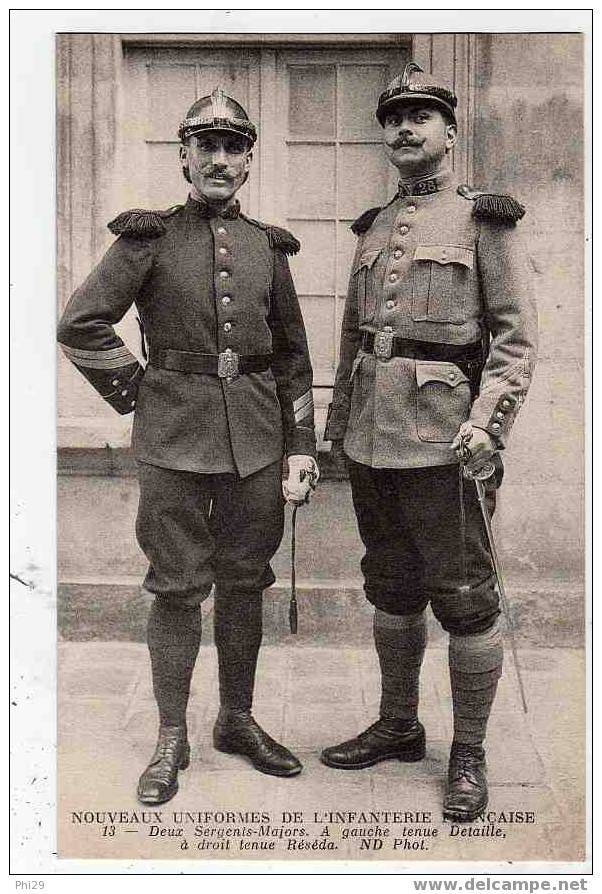
https://i.servimg.com/u/f32/12/22/09/10/res510.jpg
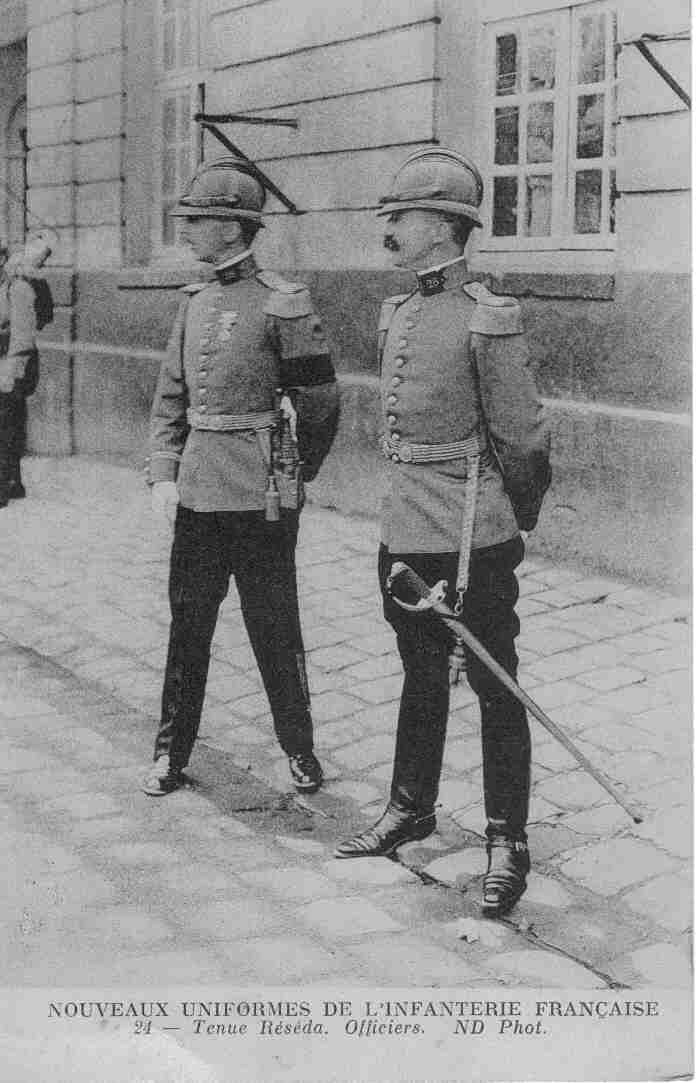
https://i.servimg.com/u/f32/12/22/09/10/res610.jpg
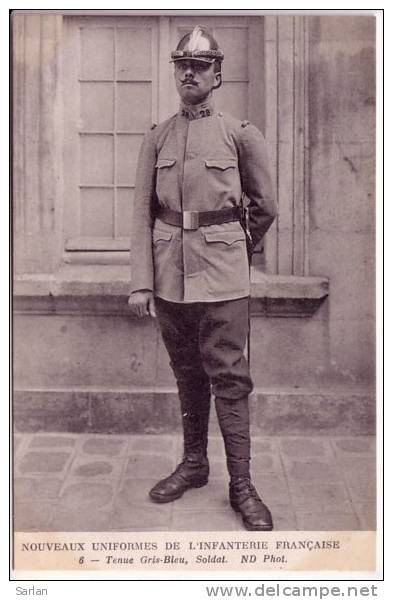
https://i.servimg.com/u/f32/12/22/09/10/res10.jpg

https://i.servimg.com/u/f32/12/22/09/10/res110.jpg

https://i.servimg.com/u/f32/12/22/09/10/res210.jpg

https://i.servimg.com/u/f32/12/22/09/10/res310.jpg

https://i.servimg.com/u/f32/12/22/09/10/res410.jpg

https://i.servimg.com/u/f32/12/22/09/10/res510.jpg

https://i.servimg.com/u/f32/12/22/09/10/res610.jpg

Sean- Posts : 1129
Join date : 2008-04-03
 colour
colour
Sean,
Ever thought of trying to colour some of these?
Ever thought of trying to colour some of these?
wfrad- Posts : 16400
Join date : 2008-04-16
Location : Durham UK
 colour photo
colour photo
Not quite what I had in mind, something that I'm unable to do!
Regards
WF
http://www.google.co.uk/imgres?imgurl=http://uploads.neatorama.com/wp-content/uploads/2010/06/somme.jpg&imgrefurl=http://www.neatorama.com/tag/photography/&usg=__WkNgEgLosW6hb35gIoq3fioCiZQ=&h=430&w=580&sz=66&hl=en&start=31&tbnid=TAklhkOXEzg4IM:&tbnh=165&tbnw=223&prev=/images%3Fq%3Dexamples%2Bof%2Bblack%2Band%2Bwhite%2Bphotos%2Bmade%2Binto%2Bcolour%2Bpictures%26um%3D1%26hl%3Den%26sa%3DX%26biw%3D1276%26bih%3D868%26tbs%3Disch:10%2C781&um=1&itbs=1&iact=hc&vpx=972&vpy=273&dur=1380&hovh=193&hovw=261&tx=105&ty=118&ei=kiVfTJWKLMuNjAeigtHwAw&oei=hyVfTLHqNtOh4QbI6IDSBw&esq=2&page=2&ndsp=20&ved=1t:429,r:9,s:31&biw=1276&bih=868
Regards
WF
http://www.google.co.uk/imgres?imgurl=http://uploads.neatorama.com/wp-content/uploads/2010/06/somme.jpg&imgrefurl=http://www.neatorama.com/tag/photography/&usg=__WkNgEgLosW6hb35gIoq3fioCiZQ=&h=430&w=580&sz=66&hl=en&start=31&tbnid=TAklhkOXEzg4IM:&tbnh=165&tbnw=223&prev=/images%3Fq%3Dexamples%2Bof%2Bblack%2Band%2Bwhite%2Bphotos%2Bmade%2Binto%2Bcolour%2Bpictures%26um%3D1%26hl%3Den%26sa%3DX%26biw%3D1276%26bih%3D868%26tbs%3Disch:10%2C781&um=1&itbs=1&iact=hc&vpx=972&vpy=273&dur=1380&hovh=193&hovw=261&tx=105&ty=118&ei=kiVfTJWKLMuNjAeigtHwAw&oei=hyVfTLHqNtOh4QbI6IDSBw&esq=2&page=2&ndsp=20&ved=1t:429,r:9,s:31&biw=1276&bih=868
wfrad- Posts : 16400
Join date : 2008-04-16
Location : Durham UK
 Re: France's Reseda Uniform
Re: France's Reseda Uniform

A contemporary autochrome colour photograph of examples of the resada uniform - at left a dragoon in the white facings of his branch and at right a caporal of line infantry. As Sean notes there were several attempts to modernise the French uniform between 1903 and 1913 but all foundered on a combination of public sentiment (which valued the colourful peacetime dress, especially the red trousers which were held to somehow symbolise France) and official parsimony.
One of Sean's pictures includes the Detaille option which managed to combine the worst of both worlds - retaining the conspicuous blue tunic, red fringed epaulettes and red trousers of the traditional uniform but replacing the kepi with a rather ugly helmet made of aluminum which would have been too light to give any protection. Even the puttees shown proved to be difficult to wear in the mud of Flanders.
buistR- Posts : 345
Join date : 2008-05-21
 bit of fun
bit of fun
Last edited by wfrad on Mon 25 Jul 2022, 8:54 am; edited 1 time in total (Reason for editing : removed photobucket)
wfrad- Posts : 16400
Join date : 2008-04-16
Location : Durham UK
 Re: France's Reseda Uniform
Re: France's Reseda Uniform
buistR wrote:
A contemporary autochrome colour photograph of examples of the resada uniform - at left a dragoon in the white facings of his branch and at right a caporal of line infantry. As Sean notes there were several attempts to modernise the French uniform between 1903 and 1913 but all foundered on a combination of public sentiment (which valued the colourful peacetime dress, especially the red trousers which were held to somehow symbolise France) and official parsimony.
One of Sean's pictures includes the Detaille option which managed to combine the worst of both worlds - retaining the conspicuous blue tunic, red fringed epaulettes and red trousers of the traditional uniform but replacing the kepi with a rather ugly helmet made of aluminum which would have been too light to give any protection. Even the puttees shown proved to be difficult to wear in the mud of Flanders.
Of course the helmet looked like it was inspired by that worn by the Sapeurs Pompiers, the French firemen, which had in turn been inspired by the helmet worn by the engineers of Napoleon's Garde Imperiale, and which would influence the design of August-Louis Adrian's steel helmet in 1915.
Animal- Posts : 203
Join date : 2008-04-09
 Nouveaux uniformes
Nouveaux uniformes
After playing with the first picture I decided to try and do a more accurate attempt rather than the general excepted few of a French uniform.
The problem I’ve found is that there does not seem to be many examples of this uniform other than old b/w photographs and even less descriptions translated into English.
A number of pictures both colour and b/w seem to show both blue and brown putties, take your pick so to speak.
The cuff appears to have a line of braid around in some photographs, missing in others, again I’m sure that someone will know what’s correct.
Also the rank insignia looked a little light for corporal so he's now possibly being promoted.
Textur and colour were hit and miss also!
For better or worse, this is what I ended up with, a cross between fantasy and fact.
Regards
WF

The problem I’ve found is that there does not seem to be many examples of this uniform other than old b/w photographs and even less descriptions translated into English.
A number of pictures both colour and b/w seem to show both blue and brown putties, take your pick so to speak.
The cuff appears to have a line of braid around in some photographs, missing in others, again I’m sure that someone will know what’s correct.
Also the rank insignia looked a little light for corporal so he's now possibly being promoted.
Textur and colour were hit and miss also!
For better or worse, this is what I ended up with, a cross between fantasy and fact.
Regards
WF

Last edited by wfrad on Mon 25 Jul 2022, 8:53 am; edited 1 time in total (Reason for editing : removed photobucket)
wfrad- Posts : 16400
Join date : 2008-04-16
Location : Durham UK
 Re: France's Reseda Uniform
Re: France's Reseda Uniform

Hi WF - actually the first of your "fantasy" reconstructions was very close to reality of a sort - the "Detaille" uniform which the French Army tried in 1912 after the "Resada" one had been shelved for the reasons given above. Designed by the French military artists Edouard Detaille and Georges Scott, the Detaille uniform for the line infantry, as shown above, included a full dress dark blue tunic and a light blue one for field dress. Red trousers for both. At a parade in 1912 the unfortunate 28th Line Infantry was chosen to parade detachments in (i) Detaille full dress; (ii) Detaille field dress and (iii) for variety the grey-green resada tunics combined with red trousers. None found popular acceptance.
Regards
buistR- Posts : 345
Join date : 2008-05-21
 uniforms
uniforms
Thanks, I did a search and came up with very few details regarding the uniform, non in English and as everyone Knows since God’s an Englishman we have trouble understanding everyone else!
Anyway, b/w illustrations and photographs didn’t show up any of the finer points so I just took a mix of the old and new, combined them with the couple of good photographs that do exist, one of which is the one you provided and non really showing the tunic and trouser to good effect.
Sometimes fact and fantasy get mixed up so often it's hard to determine which is which, so long as the illustrations haven't added to that confusion.
Thanks for the information and another nice illustration of uniforms.
Regards
WF
Anyway, b/w illustrations and photographs didn’t show up any of the finer points so I just took a mix of the old and new, combined them with the couple of good photographs that do exist, one of which is the one you provided and non really showing the tunic and trouser to good effect.
Sometimes fact and fantasy get mixed up so often it's hard to determine which is which, so long as the illustrations haven't added to that confusion.
Thanks for the information and another nice illustration of uniforms.
Regards
WF
wfrad- Posts : 16400
Join date : 2008-04-16
Location : Durham UK
 Re: France's Reseda Uniform
Re: France's Reseda Uniform
Somewhere on line is an English translation of a French work on Infantry Equipment (including clothing) as worn about 1906. I'm afraid I can't remember the author at the moment. However, it is an excellent source of information on European infantry soldiers and every little detail about all the stuff in the packs. The author (French army) was highly opinionated on the various items a soldier should have and he went into great detail about his reasons, probably most of which an average soldier would not agree with. It is well illustrated with photographs that are reproduced about as well as you might expect but none are in color. Of course in ten years, everything had changed.
He did not mention that I recall any of the experimental uniforms that had been tried out but one of the ironies of army uniforms, which is still true, is that any given uniform is expected to be inconspicious yet still identify him as a soldier in such and such an army. That was one of the reasons that many of the experimental uniforms were utilmately rejected but it does appear true that those red trousers were seen as something special. For that matter, the white canvas fatigue trousers were also widely worn for campaign use in North Africa so perhaps the value of camouflage is over rated.
He did not mention that I recall any of the experimental uniforms that had been tried out but one of the ironies of army uniforms, which is still true, is that any given uniform is expected to be inconspicious yet still identify him as a soldier in such and such an army. That was one of the reasons that many of the experimental uniforms were utilmately rejected but it does appear true that those red trousers were seen as something special. For that matter, the white canvas fatigue trousers were also widely worn for campaign use in North Africa so perhaps the value of camouflage is over rated.
BlueTrain- Posts : 29
Join date : 2013-01-30
 Uniforms
Uniforms
If the link for the book comes to you it would be much appreciated by all...
I recall reading somewhere, that one particular French regiment reintroduced the famous red trouser after the Great War whilst in Germany, just to aggravate the locals...
Maybe some truth in it!
I recall reading somewhere, that one particular French regiment reintroduced the famous red trouser after the Great War whilst in Germany, just to aggravate the locals...
Maybe some truth in it!
wfrad- Posts : 16400
Join date : 2008-04-16
Location : Durham UK
 Re: France's Reseda Uniform
Re: France's Reseda Uniform
The title of the book is "Comparitive Studies of the Field Equipment of the Foot Soldier of the French and Foreign Armies (1906). The author is Lavisse. It is translated into English and this particular edition was published by the Government Publishing Office. It's really fascinating, although the subject as described in the title is all it covers. But it does cover it thoroughly. Officer's equipment and uniforms are not covered nor are other arms like cavalry. I think you can find it be searching under that name.
While it is though enough, there are things that are not included, presumably because they were not field equipment. For instance, the white fatigue uniform as used by the French is not mentioned. Likewise, there is no mention of variations for specialist troops like rifles, alpine troops or light infantry. Also, the part about US Army equipment was excluded, presumably because the target audience knew all about it. The British bandolier equipment was also not included, the previous Slade-Wallace being described instead.
It is fascinating at this distance in time to see what they were issued and what was apparently considered essential equipment. Neck cloths and cravattes were apparently essential articles but not gloves. Two shirts and one pair of drawers was sufficient and generally it appears that soldiers were expected to march with nearly all of their issued clothing and equipment. The study also is limited to European postings and colonial variations are not included.
While it is though enough, there are things that are not included, presumably because they were not field equipment. For instance, the white fatigue uniform as used by the French is not mentioned. Likewise, there is no mention of variations for specialist troops like rifles, alpine troops or light infantry. Also, the part about US Army equipment was excluded, presumably because the target audience knew all about it. The British bandolier equipment was also not included, the previous Slade-Wallace being described instead.
It is fascinating at this distance in time to see what they were issued and what was apparently considered essential equipment. Neck cloths and cravattes were apparently essential articles but not gloves. Two shirts and one pair of drawers was sufficient and generally it appears that soldiers were expected to march with nearly all of their issued clothing and equipment. The study also is limited to European postings and colonial variations are not included.
BlueTrain- Posts : 29
Join date : 2013-01-30
 Re: France's Reseda Uniform
Re: France's Reseda Uniform
I also wanted to add here that there are numerous on-line reproductions of several British regulations from before 1900, although detail descriptions of uniforms and so on are a relatively late thing, I think. Somewhere I found copies of British Royal Marine regulations for dress and clothing issue, which over the period of a hundred years, got longer and longer and longer. That was also true of both US and Canadian army dress regulations, both of which go into infinite detail these days on matters of haircuts, body decorations, maternity clothing and such stuff. In 1930, a regimental standing orders would have everything covered in two or three pages. The Royal Marine regulations are the most varied (nearly all for the last 75 years are available) and therefore most valuable. Unfortunately, I'll have to look for that source, too.
As valuable and interesting as all those documents are, they really don't give an accurate picture of what soldiers usually looked like from day to day because as I said somewhere else around here, the most commonly worn uniforms tend to be the least described in regulations.
Another thing to keep in mind, at least for some armies and I suspect most, is that the official regulations were only one set of instructions that had to be complied with. There were also unit standing orders, regimental standing orders, local customs and actual availability of any given article of clothing and equipment. An individual soldier usually also had his own ideas about the way things ought to be and would do his best to satisify his own whims. And on top of it all, some things were purely optional for ordinary wear, like those bib scarves that the US army wore in the 1950s and 1960s.
As valuable and interesting as all those documents are, they really don't give an accurate picture of what soldiers usually looked like from day to day because as I said somewhere else around here, the most commonly worn uniforms tend to be the least described in regulations.
Another thing to keep in mind, at least for some armies and I suspect most, is that the official regulations were only one set of instructions that had to be complied with. There were also unit standing orders, regimental standing orders, local customs and actual availability of any given article of clothing and equipment. An individual soldier usually also had his own ideas about the way things ought to be and would do his best to satisify his own whims. And on top of it all, some things were purely optional for ordinary wear, like those bib scarves that the US army wore in the 1950s and 1960s.
BlueTrain- Posts : 29
Join date : 2013-01-30
 Re: France's Reseda Uniform
Re: France's Reseda Uniform
Thanks for posting the reference to the comparative studies book Bluetrain.
Re the extra items of French clothing that you list:
- the white fatigue blouse and overall trousers were made of a material that translates from French as both "linen" and "canvas" - probably much the same as the hardwearing but flexible white "duck" uniforms of the Royal Navy of the pre-1914 period. Photographs show the French infantry wearing their white fatigues over the dark blue veste (jacket) and red trousers of their barracks dress to provide protection for the less easily cleanable cloth garments. When issued, the fatigue items were off-white or light beige but they soon bleached with frequent washings. As you note, in Algeria and Tunisia the white trousers were worn as part of the regular hot-weather field and even dress uniforms by the Foreign Legion and other French units (hence the Beau Geste image).
-cravats remained a universal feature of the French other-ranks uniform until khaki replaced sky-blue in the 1930s. While they must have been difficult to keep smartly wound (like the puttees of the same era) these neck-cloths did protect the neck from the abrasive high collar of the earlier uniforms and kept rain out.
-white gloves were issued to the French infantry as part of their full dress and walking out uniforms until 1902 but thereafter were retained only by officers and warrant officers. There is a popular myth that French officers went to war in 1914 wearing their white gloves "because it was chic to die in white gloves" but this is not supported by photographs - brown leather gloves were regulation field wear.
-an issue of two shirts and only one pair of drawers does not reflect well on the personal hygiene standards of the French soldier of 1906 but the shirts were very long, worn tucked into the drawers and in effect substituted for underwear.
Re the extra items of French clothing that you list:
- the white fatigue blouse and overall trousers were made of a material that translates from French as both "linen" and "canvas" - probably much the same as the hardwearing but flexible white "duck" uniforms of the Royal Navy of the pre-1914 period. Photographs show the French infantry wearing their white fatigues over the dark blue veste (jacket) and red trousers of their barracks dress to provide protection for the less easily cleanable cloth garments. When issued, the fatigue items were off-white or light beige but they soon bleached with frequent washings. As you note, in Algeria and Tunisia the white trousers were worn as part of the regular hot-weather field and even dress uniforms by the Foreign Legion and other French units (hence the Beau Geste image).
-cravats remained a universal feature of the French other-ranks uniform until khaki replaced sky-blue in the 1930s. While they must have been difficult to keep smartly wound (like the puttees of the same era) these neck-cloths did protect the neck from the abrasive high collar of the earlier uniforms and kept rain out.
-white gloves were issued to the French infantry as part of their full dress and walking out uniforms until 1902 but thereafter were retained only by officers and warrant officers. There is a popular myth that French officers went to war in 1914 wearing their white gloves "because it was chic to die in white gloves" but this is not supported by photographs - brown leather gloves were regulation field wear.
-an issue of two shirts and only one pair of drawers does not reflect well on the personal hygiene standards of the French soldier of 1906 but the shirts were very long, worn tucked into the drawers and in effect substituted for underwear.
buistR- Posts : 345
Join date : 2008-05-21
 Re: France's Reseda Uniform
Re: France's Reseda Uniform
Thanks for the reply. Here is a link to a website (entirely in French) with many photos of the white fatigue dress, along with threads on other items from the period: http://lagrandeguerre.cultureforum.net/t41868-la-tenue-de-bourgeron. I may have found the link elsewhere on this forum for all I remember.
An interesting thing about some items of uniform and other military gear is the way some items last and last and seem to be on issue forever, while other items go out of use and become ancient history within a year or two. But I imagine that ultimately happens to anything. For instance, it would have been surprising to anyone when I was in the army to have learned that the army at one time issued denim clothing for fatigue use. But they changed over to OD herringbone twill at about the same time the build up was starting for WWII. At least one old master sergeant was still wearing HBT when I was in the army in the mid-1960s. His boots were probably originally brown, too.
An interesting thing about some items of uniform and other military gear is the way some items last and last and seem to be on issue forever, while other items go out of use and become ancient history within a year or two. But I imagine that ultimately happens to anything. For instance, it would have been surprising to anyone when I was in the army to have learned that the army at one time issued denim clothing for fatigue use. But they changed over to OD herringbone twill at about the same time the build up was starting for WWII. At least one old master sergeant was still wearing HBT when I was in the army in the mid-1960s. His boots were probably originally brown, too.
BlueTrain- Posts : 29
Join date : 2013-01-30
 Re: France's Reseda Uniform
Re: France's Reseda Uniform
Thanks for the link - very interesting. I guess with the 100th anniversary of "the guns of August" looming we will be seeing a lot of material on the uniforms of 1914 appearing on websites and in specialist publications over the next few months.
buistR- Posts : 345
Join date : 2008-05-21
 Similar topics
Similar topics» Uniform???
» German, but what organisation?
» Uniform ID?
» Uniform of Guatemala 1910-1939
» Mexican Army Gala Uniform 2004
» German, but what organisation?
» Uniform ID?
» Uniform of Guatemala 1910-1939
» Mexican Army Gala Uniform 2004
Page 1 of 1
Permissions in this forum:
You cannot reply to topics in this forum

